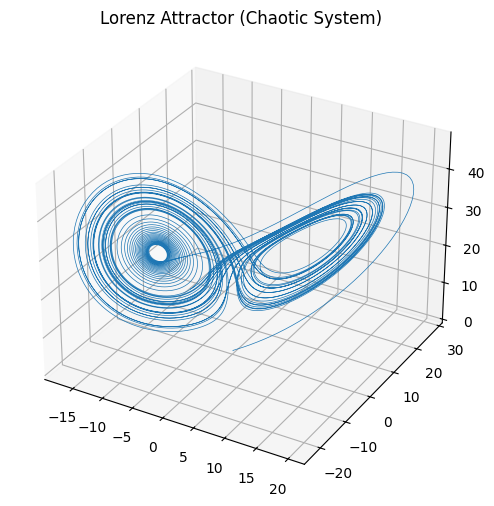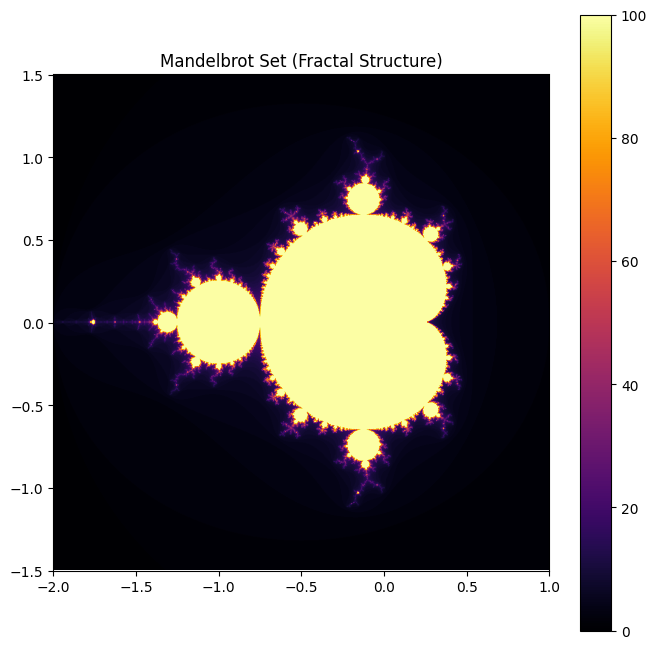Apollo & Dionysus#
United States | Losing count
DOGE comes for the data wonks#
America may soon be unable to measure itself properly

Mar 30th 2025|New York
FOR NEARLY three decades the federal government has painstakingly surveyed tens of thousands of Americans each year about their health. Door-knockers collect data on the financial toll of chronic conditions like obesity and asthma, and probe the exact doses of medications sufferers take. The result, known as the Medical Expenditure Panel Survey (MEPS), is the single most comprehensive, nationally representative portrait of American health care, a balkanised and unwieldy $5trn industry that accounts for some 17% of GDP.
MEPS is part of a largely hidden infrastructure of government statistics collection now in the crosshairs of the Department of Government Efficiency (DOGE). In mid-March officials at a unit of the Department of Health and Human Services (HHS) that runs the survey told employees that DOGE had slated them for an 80-90% reduction in staff and that this would “not be a negotiation”. Since then scores of researchers have taken voluntary buyouts. Those left behind worry about the integrity of MEPS. “Very unclear whether or how we can put on MEPS” with roughly half of the staff leaving, one said. On March 27th, the health secretary, Robert F. Kennedy junior, announced an overall reduction of 10,000 personnel at the department, in addition to those who took buyouts.
History is a fractal unfolding of entropy and order, a ceaseless churn wherein civilizations & belief-systems rise on the back of extracted resources, only to collapse under the weight of their own complexity
FOR NEARLY three decades the federal government has painstakingly surveyed tens of thousands of Americans each year about their health. Door-knockers collect data on the financial toll of chronic conditions like obesity and asthma, and probe the exact doses of medications sufferers take. The result, known as the Medical Expenditure Panel Survey (MEPS), is the single most comprehensive, nationally representative portrait of American health care, a balkanised and unwieldy $5trn industry that accounts for some 17% of GDP.
MEPS is part of a largely hidden infrastructure of government statistics collection now in the crosshairs of the Department of Government Efficiency (DOGE). In mid-March officials at a unit of the Department of Health and Human Services (HHS) that runs the survey told employees that DOGE had slated them for an 80-90% reduction in staff and that this would “not be a negotiation”. Since then scores of researchers have taken voluntary buyouts. Those left behind worry about the integrity of MEPS. “Very unclear whether or how we can put on MEPS” with roughly half of the staff leaving, one said. On March 27th, the health secretary, Robert F. Kennedy junior, announced an overall reduction of 10,000 personnel at the department, in addition to those who took buyouts.
AdvertisementScroll to continue with content There are scores of underpublicised government surveys like MEPS that document trends in everything from house prices to the amount of lead in people’s blood. Many provide standard-setting datasets and insights into the world’s largest economy that the private sector has no incentive to replicate.
Cosmology, Geology, Biology, Ecology, Symbiotology, Teleology
Attention
Nonself vs. Self
Identity Negotiation
Salience, Expand, Reweight, Prune, Networkxw
— Yours Truly
Even so, America’s system of statistics research is overly analogue and needs modernising. “Using surveys as the main source of information is just not working” because it is too slow and suffers from declining rates of participation, says Julia Lane, an economist at New York University. In a world where the economy shifts by the day, the lags in traditional surveys—whose results can take weeks or even years to refine and publish—are unsatisfactory. One practical reform DOGE might encourage is better integration of administrative data such as tax records and social-security filings which often capture the entire population and are collected as a matter of course.
As in so many other areas, however, DOGE’s sledgehammer is more likely to cause harm than to achieve improvements. And for all its clunkiness, America’s current system manages a spectacular feat. From Inuits in remote corners of Alaska to Spanish-speakers in the Bronx, it measures the country and its inhabitants remarkably well, given that the population is highly diverse and spread out over 4m square miles. Each month surveys from the federal government reach about 1.5m people, a number roughly equivalent to the population of Hawaii or West Virginia.
The MEPS case suggests how DOGE’s haphazard cuts risk upending an elaborate ecosystem. Contracted employees at Westat, a private research firm, conduct the survey for the Agency for Healthcare Research and Quality (AHRQ), a part of HHS, and the National Centre for Health Statistics, a part of the Centres for Disease Control and Prevention. Specialised field staff go door to door collecting sensitive personal health and financial data from a sample of Americans. Those data are then combined with information from the respondents’ medical providers. Experts at AHRQ turn this into a nationally representative sample through data-weighting and imputation.
Show code cell source
import matplotlib.pyplot as plt
import numpy as np
def draw_branch(x, y, angle, depth, length, ax):
if depth == 0:
return
x_end = x + length * np.cos(angle)
y_end = y + length * np.sin(angle)
ax.plot([x, x_end], [y, y_end], 'k-', lw=2)
new_length = length * 0.7
draw_branch(x_end, y_end, angle - np.pi/6, depth - 1, new_length, ax)
draw_branch(x_end, y_end, angle + np.pi/6, depth - 1, new_length, ax)
fig, ax = plt.subplots(figsize=(6, 8))
ax.set_xticks([])
ax.set_yticks([])
ax.set_frame_on(False)
draw_branch(0, -1, np.pi/2, 10, 1, ax)
plt.show()


Fig. 14 Strange Attractor (Chaotic System). This code simulates a simple chaotic attractor using the Lorenz system.#
No private firm currently has the expertise or access to doctors and individual medical files to manage the entire survey themselves. Health-insurance companies can see their own customers but not beyond them. “MEPS allows us to ask, for people who look like America, what happens when you gain weight and how does that affect your probability of ending up in the hospital? How does that raise your medical expenditures?” says John Cawley, an economist at Cornell University who studies obesity. At stake, for example, is the timely question of whether expensive GLP-1 drugs are worth the cost to insurers in the long run.
Sources in AHRQ say they expect that a skeleton crew will be preserved to run MEPS because the agency is mandated by Congress to collect such data. That is unlikely to be sufficient. Manpower is intrinsic to successful survey research. “You can’t just input data through a machine,” says Steve Pierson, a director at the American Statistical Association. Experience is equally essential. Specialists have to measure every slice of a constantly changing and often invisible economy: just ask someone at the Bureau of Labour Statistics (BLS) how difficult it is to account for employees of the gig economy in the unemployment rate. “It’s not just resource- and labour-intensive, but expertise-intensive, too” Mr Pierson says.
Show code cell source
from scipy.integrate import solve_ivp
import numpy as np
import matplotlib.pyplot as plt
def lorenz(t, state, sigma=10, beta=8/3, rho=28):
x, y, z = state
dxdt = sigma * (y - x)
dydt = x * (rho - z) - y
dzdt = x * y - beta * z
return [dxdt, dydt, dzdt]
t_span = (0, 50)
initial_state = [0.1, 0.0, 0.0]
t_eval = np.linspace(t_span[0], t_span[1], 10000)
sol = solve_ivp(lorenz, t_span, initial_state, t_eval=t_eval)
fig = plt.figure(figsize=(8, 6))
ax = fig.add_subplot(111, projection="3d")
ax.plot(sol.y[0], sol.y[1], sol.y[2], lw=0.5)
ax.set_title("Lorenz Attractor (Chaotic System)")
plt.show()


Fig. 15 Fractal Structure (Self-Similarity). A visualization of the famous Mandelbrot fractal, representing infinite complexity at all scales.#
Even before DOGE, America’s statistical stewards were making do with less. Funding has flatlined and in many cases declined, even as response rates to surveys have plummeted. Over the past 15 years, the budget for the BLS has decreased by 18% in real terms. The National Centre for Health Statistics, which co-sponsors MEPS, has seen a similar decline (see chart 1). Though these agencies are non-partisan, Americans’ trust in the statistics they produce now ebbs and flows with the fortunes of their preferred political party (see chart 2).
DOGE has so far spared America’s most prominent number-crunchers at the BEA, BLS and the Census Bureau, which help produce some of the most market-sensitive government data. But their employees are on edge about what may be coming. Even modest funding cuts can reverberate, as agencies reduce survey sample sizes in an effort to save costs, which can produce less reliable results. Tiny variations in survey measures like the Consumer Price Index, which is constructed using both online prices and surveys of brick-and-mortar stores, can cause significant distortions. Entitlements like social security are indexed to CPI, so “if it’s off by even a tenth of a percent, the federal government will overpay or underpay beneficiaries by about a billion dollars a year,” says Erica Groshen, a former commissioner of BLS.
Show code cell source
import numpy as np
import matplotlib.pyplot as plt
def mandelbrot(c, max_iter=100):
z = c
for n in range(max_iter):
if abs(z) > 2:
return n
z = z*z + c
return max_iter
xmin, xmax, ymin, ymax = -2.0, 1.0, -1.5, 1.5
width, height = 1000, 1000
x = np.linspace(xmin, xmax, width)
y = np.linspace(ymin, ymax, height)
mandelbrot_set = np.zeros((width, height))
for i in range(width):
for j in range(height):
mandelbrot_set[i, j] = mandelbrot(complex(x[i], y[j]))
plt.figure(figsize=(8, 8))
plt.imshow(mandelbrot_set.T, extent=[xmin, xmax, ymin, ymax], cmap="inferno")
plt.title("Mandelbrot Set (Fractal Structure)")
plt.colorbar()
plt.show()


Fig. 16 Immitation. This is what distinguishes humans (really? self-similar is all fractal). We reproduce language, culture, music, behaviors, weapons of extraordinarily complex nature. A ritualization of these processes stablizes its elements and creates stability and uniformity, as well as opportunities for conflict and negotiation. These codes illustrate the key points made in Sapolsky’s discussion: the limits of reductionism, the role of chaos in biological systems, and the fundamental nature of self-similarity in complex structures.#
At the statistical arm of the Department of Agriculture, specialists track commodities as they move through American and global markets. “Seafood is complicated”, notes one data wonk, because you “have to understand both aquaculture and wild catch, and both finfish and shellfish”. It is the kind of real-time data-collection that will be important if Donald Trump’s tariffs ignite a prolonged trade war. But in mid-February DOGE fired probationary employees at the department. Since then a federal judge has ruled the move was unlawful and ordered that the workers be reinstated, but the litigation continues.
A sudden elimination of surveys could rattle the private sector, too. Analysts at financial firms guzzle up government data releases, scrutinising even slight shifts in figures. Firms can use their own data, but these can provide a limited and skewed picture. “The only way for the private sector to capture what’s going on is to make assumptions” about the data they do not have, says Karen Dynan, a former chief economist at the Treasury Department. “And the only way they can do that is if they have nationally representative numbers from the government. ” Some of those numbers seem likely to decline in availability and reliability.

